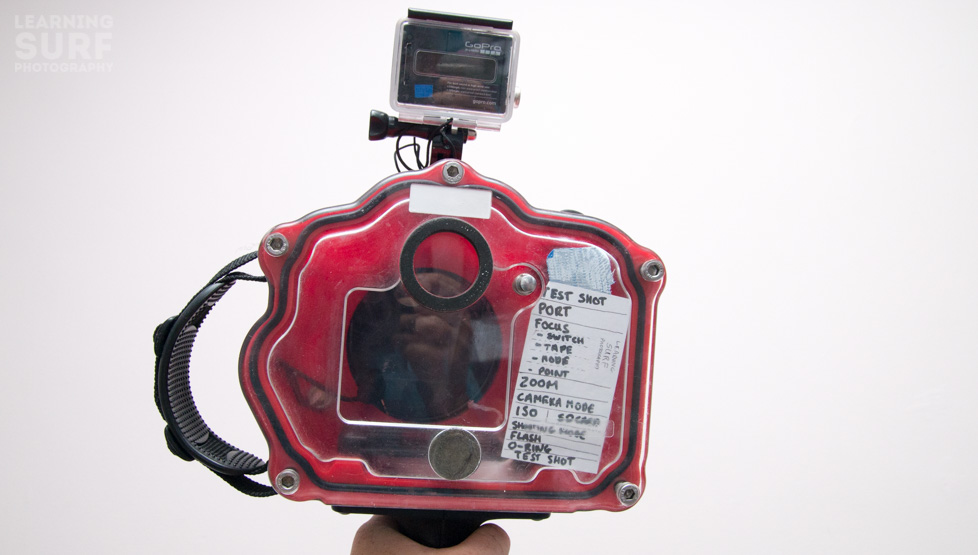I’ve made enough goofs with my water housing now that I’m in a good position to make a water housing check list which I can follow every time I set up my housing, my housing doesn’t have many controls for the camera so I need to be sure to set it up right before sealing it into the housing. My Canon 70D does have WiFi though so if I leave this enabled I can at least connect that way and change settings, but it’s often just as quick to take it out and set it up again.
I’ve written it on the back of a business card and taped it inside my housing so I can quickly go through each item as I’m putting the camera inside the housing.
Cheat sheet taped in place in the back plate of my Aquatech housing
I might have forgotten one or two entries here, and some special scenarios (on camera flash) involve more entries than others but this should help you if you’re starting to use your camera in a housing.
- Test Shot – just in case you have a lens error, this has happened to me before, I had to run all the way back to my car to open the housing, clean the lens contacts, and close it up again.
- Clean port – I have got out into the water a few times before realising there is some dust or sand on the inside of my port.
- Focus Switch – make sure it’s in manual or auto
- Focus tape – if it’s manual focus make sure it’s taped, the bit of tape sticking the card to the inside of the housing can be used if there’s nothing else handy
- Focus Mode – you’ll probably want it in AI Servo or equivalent, I’ve left it in single shot mode before by accident
- Focus Point – it’s easy to forget that you’ve changed the focus point before putting the camera in the housing.
- Lens Zoom – I’ve accidentally left my Tokina 10-17mm fisheye at 12mm instead of 10mm before
- Camera Mode – maybe you’ve left it in Manual and you want shutter priority?
- ISO – check if it’s in Auto or at whatever level you decide, it’s one thing that you can’t change on my housing
- SD Card – just make sure it’s got plenty of space, I try and use an empty card for each water shoot, you can’t swap cards very easily when out in the water.
- Shooting mode – it should be in high speed continuous for nearly every situation
- Flash – check the flash settings, naturally you only need to worry about this when shooting with a flash
- Check o-ring – make sure there’s no sand or hair on the o-ring, several times I’ve done the housing up and only noticed some sand on the o-ring after tightening up half the bolts
- Test Shot – the housing’s sealed and ready to go, take another test shot before getting to the water, put your eye to the viewfinder and make sure all works as expected
If you’re after more tips on using a water housing don’t miss the first three parts of the water housing users guide:

Leave a Reply